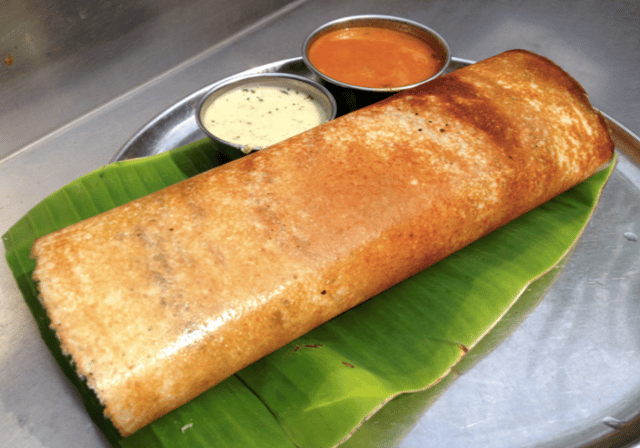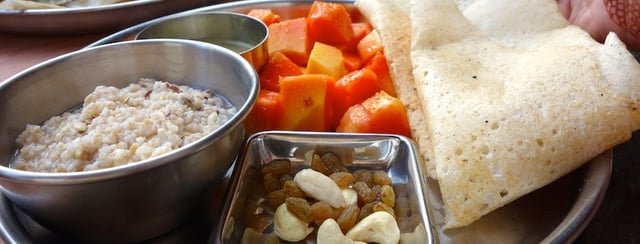In Ayurveda, you really are what you eat.
Food is an integral part of the Ayurvedic tradition and everything is carefully chosen and prepared to ensure good health. Fresh, local, seasonal produce is carefully cleaned and blessed and cooked with great care. Food combinations are meticulously crafted to ensure meals are both nutritious and easy to digest.
If you are living an Ayurvedic lifestyle, you’ll choose foods that are appropriate for your dosha, or body type. Eating according to your dosha helps to maintain balance and good health.
According to Ayurveda, different foods have different energetic properties. These energetic properties reflect the three universal qualities known as the Gunas: Tamas, Rajas and Sattva.
The 3 Gunas
- Tamas: a heavy quality that represents darkness, inertia and atrophy.
- Rajas: an active quality that represents movement, passion and confusion.
- Sattva: balance, purity and goodness.
All three Gunas are necessary – we need the energy of Tamas to help us wind down and sleep at night, while Rajas provides the necessary movement to get us up and running in the morning. However, when Tamas or Rajas dominate, we end up feeling imbalanced and yoga teaches us to move towards Sattva through our lifestyle choices, including what we eat.

All food items can be categorized as Rajasic, Tamasic or Sattvic. Stimulating foods such as chilli and caffeine are considered Rajasic. Heavy, sedating foods such as animal products are considered Tamasic. In order to maintain a healthy body and clear mind, Ayurveda recommends eating Sattvic food – high-nutrient, seasonal, organic vegetables, whole-grains, unhomogenised dairy, nuts, legumes and fruit.
When you follow an Ayurvedic diet, the food is chosen, prepared and cooked to be Sattvic. This boosts digestion, nourishes the body, calms the irritated gut and creates a sense of lightness in both the body and the mind. It’s the ideal food for practicing yoga and meditation as well as being healing and cleansing for the body.
Some of the vegetables used in Ayurvedic dishes are unfamiliar to people in the West. There are a multitude of ‘gourds’, a word that is sometimes used to describe pumpkins, but more accurately refers to members of the Cucurbitaceae family. From snake gourd to bottle gourd, these tasty vegetables turn up in a variety of stews and side dishes.

If you visit a yoga therapist or Ayurvedic practitioner, they might recommend diet modifications to help balance your dosha and improve your health and vitality. Sometimes certain food types will be added or removed from your menu, or you may be invited to take a herbal supplement that improves digestion.
All the photographs in this post were taken during Adore Yoga’s retreats in South India where we follow an Ayurvedic diet as well as enjoying Ayurvedic massages twice a day. Combined with daily yoga and meditation, it’s a delicious recipe for wellbeing.

